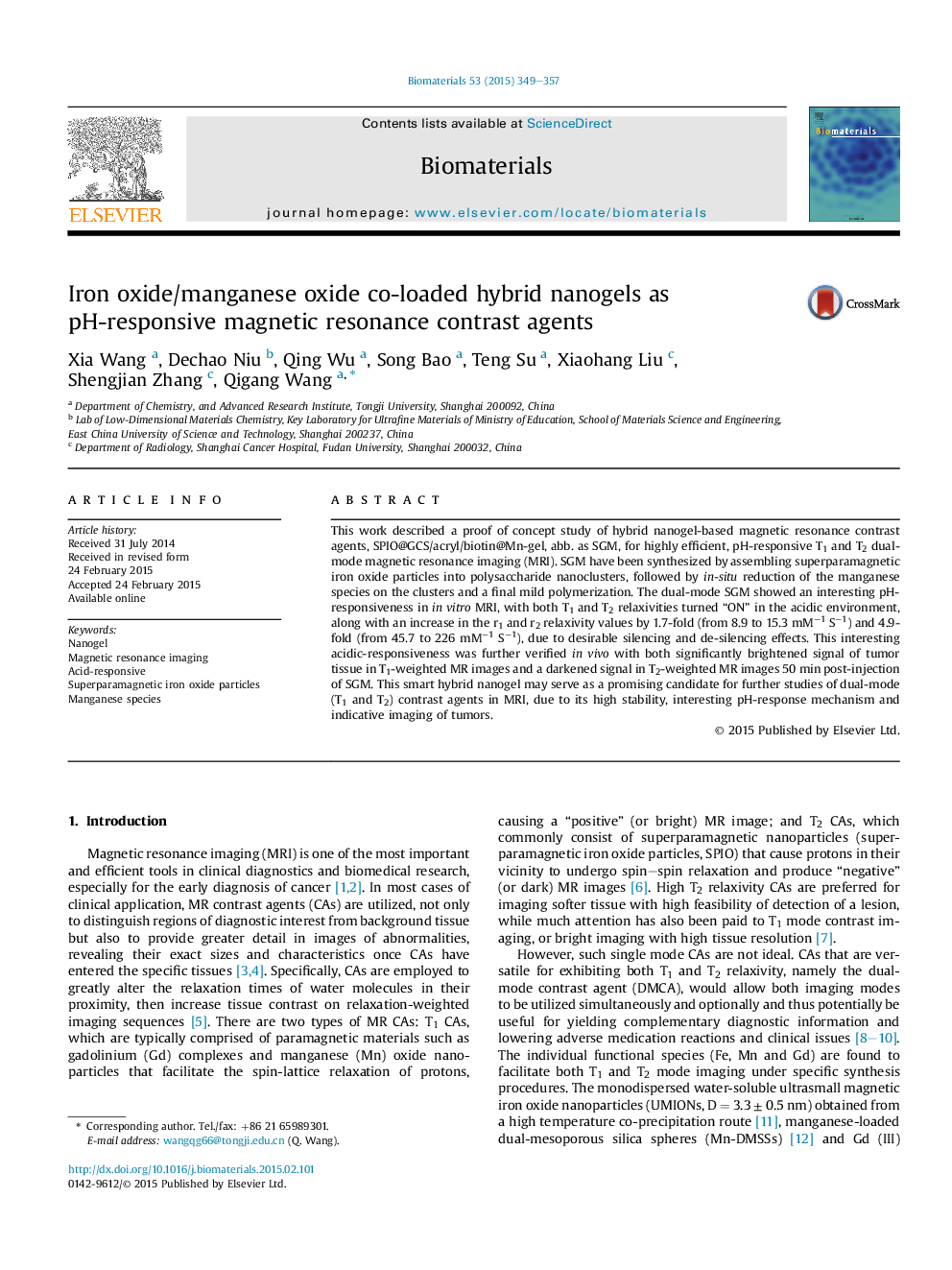| Article ID | Journal | Published Year | Pages | File Type |
|---|---|---|---|---|
| 6485926 | Biomaterials | 2015 | 9 Pages |
Abstract
This work described a proof of concept study of hybrid nanogel-based magnetic resonance contrast agents, SPIO@GCS/acryl/biotin@Mn-gel, abb. as SGM, for highly efficient, pH-responsive T1 and T2 dual-mode magnetic resonance imaging (MRI). SGM have been synthesized by assembling superparamagnetic iron oxide particles into polysaccharide nanoclusters, followed by in-situ reduction of the manganese species on the clusters and a final mild polymerization. The dual-mode SGM showed an interesting pH-responsiveness in in vitro MRI, with both T1 and T2 relaxivities turned “ON” in the acidic environment, along with an increase in the r1 and r2 relaxivity values by 1.7-fold (from 8.9 to 15.3 mMâ1 Sâ1) and 4.9-fold (from 45.7 to 226 mMâ1 Sâ1), due to desirable silencing and de-silencing effects. This interesting acidic-responsiveness was further verified in vivo with both significantly brightened signal of tumor tissue in T1-weighted MR images and a darkened signal in T2-weighted MR images 50 min post-injection of SGM. This smart hybrid nanogel may serve as a promising candidate for further studies of dual-mode (T1 and T2) contrast agents in MRI, due to its high stability, interesting pH-response mechanism and indicative imaging of tumors.
Related Topics
Physical Sciences and Engineering
Chemical Engineering
Bioengineering
Authors
Xia Wang, Dechao Niu, Qing Wu, Song Bao, Teng Su, Xiaohang Liu, Shengjian Zhang, Qigang Wang,
